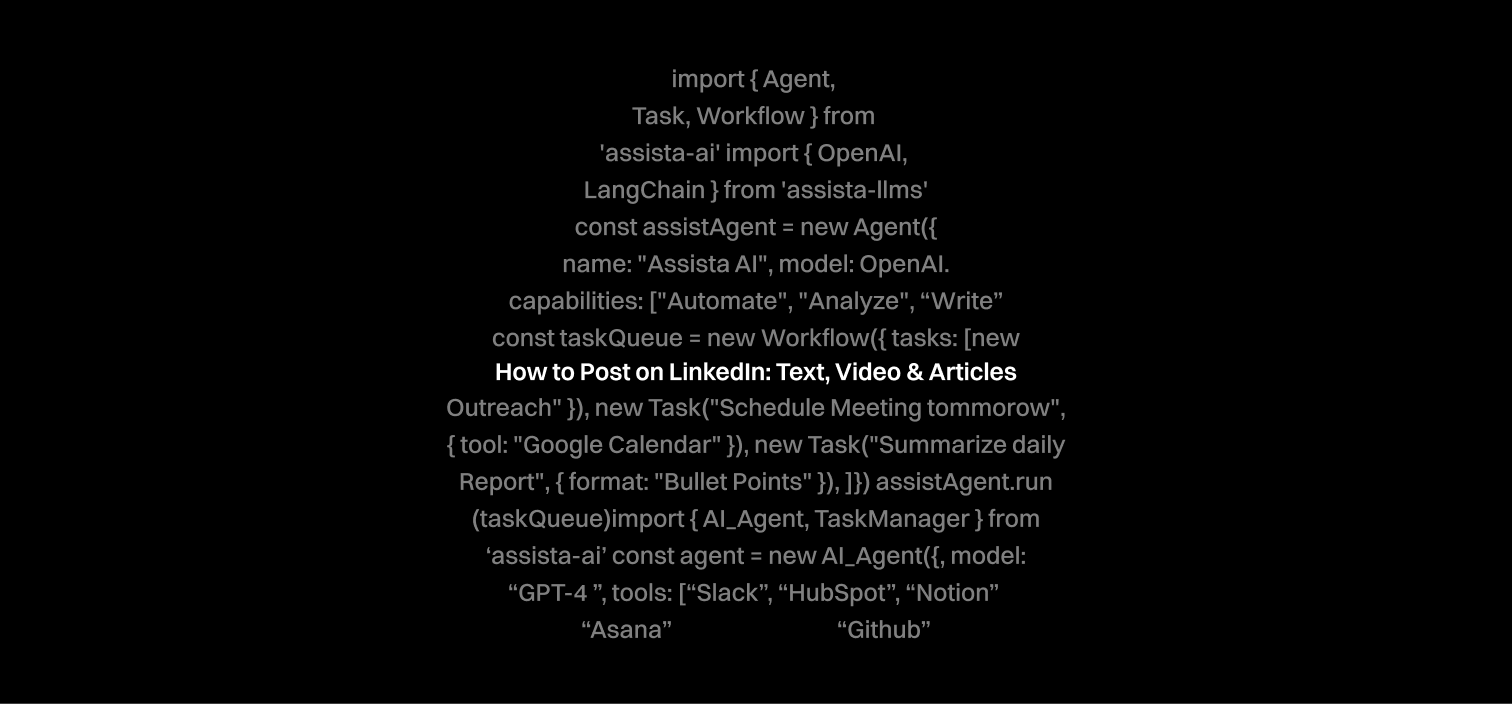How to Post on LinkedIn: Text, Video & Articles That Get Seen (And Shared)

LinkedIn has become more than just an online resume. It’s now the go-to platform for professionals looking to build credibility, drive leads, and grow their personal or business brand. But for many solopreneurs and CEOs, the question remains:
How do you actually post on LinkedIn in a way that gets noticed?
If you've found yourself staring at that blank post box, unsure whether to share a quick update, publish a long-form article, or record a video, you're not alone. This guide is your deep-dive into the art (and science) of posting on LinkedIn — with examples, expert tips, and proven tactics that work in 2025.
Why Posting on LinkedIn Matters More Than Ever
According to a 2024 benchmark study by Socialinsider, LinkedIn post engagement grew by nearly 30% year-over-year. This reflects both rising platform activity and an opportunity for solopreneurs and CEOs to stand out with consistent, high-value posts.
Yet, only 1% of LinkedIn users post consistently. That means if you're sharing anything—let alone valuable insights—you’re already in the top tier of visibility.
"Being read by the right people is still more important than being read by a lot of people. But getting in front of the 'right' folks is increasingly tough."
— Peter Walker, Head of Insights @ Carta
The 3 Core Formats for LinkedIn Posts
1. Text & Image Posts: The Bread and Butter
These are your everyday updates—status posts, announcements, quick reflections, questions to your network, or sharing a win. You can add emojis, links (but beware—LinkedIn deprioritizes external links), or a call to action.
Best practices:
- Keep the first 2 lines hooky—only the top 3 lines are visible before the “See more” button.
- Use line breaks to improve readability.
- Avoid posting links in the body—place them in the first comment if needed.
- Add images, but make them custom or branded if possible. Stock images perform worse.
Stats that matter:
- Posts with images get 2x more comments on average (Source: LinkedIn)
- Short, punchy posts (150–300 words) see the highest CTR, according to Shield Analytics.
2. Video Posts: The Visibility Engine
Video is still massively underused on LinkedIn. If you’re camera-friendly, this is your edge.
You can either:
- Upload native video (recommended)
- Share a link (less reach)
Tips from creators like Quentin Allums and Judi Fox:
- Keep videos under 90 seconds for max retention.
- Use captions—70% of users watch with sound off.
- Add a personal intro or talking head to make it feel more authentic.
"On LinkedIn, you’re not competing with entertainment—you’re competing with silence. Speak clearly, and show up real." – Quentin Allums
3. LinkedIn Articles: The Authority Play
Articles live in your profile, are indexed by Google, and build thought leadership over time.
They work best when you want to:
- Share research or industry commentary
- Repurpose a blog post
- Go deep on a topic (800–2,000 words)
Structure matters:
- Write a clear, benefit-driven headline
- Include a banner image
- Use H2s and bullet points
- End with a CTA (like inviting comments or linking to your newsletter)
Many consultants like Katelyn Bourgoin or Amanda Natividad use LinkedIn articles to repurpose long-form content they’ve already published elsewhere.
5 Posting Mistakes That Kill Reach
- Dropping links in the post body → Instead, add them in the comments.
- Posting without a hook → You’ve got 3 lines to earn attention—make them count.
- Not engaging in comments → Half the reach comes after you post.
- Ignoring mobile formatting → Over 60% of users browse LinkedIn on mobile.
- Posting only about yourself → Talk to your audience, not at them.
Timing: When Should You Post?
According to SproutSocial, the most effective times to post on LinkedIn are weekday mornings, especially between 8 a.m. and 11 a.m., with Tuesday through Thursday showing the highest engagement. These windows align with typical professional routines when users are most active and receptive.
Avoid posting during late evenings and weekends, unless your audience includes international or round-the-clock professionals.
That said, test your own schedule. Use analytics tools like Taplio, Shield, or native LinkedIn stats to track what works for you.
How Often Should You Post?
You don’t need to post daily to see results. Start with 2–3x per week. Many creators find a rhythm that looks like:
- Monday: Share a client story or personal win
- Wednesday: Offer a how-to or behind-the-scenes insight
- Friday: Pose a question or short reflection to drive comments
Consistency > frequency.
What Should You Write About?
Here are proven content types that work for solopreneurs and CEOs:
- Lessons learned from projects or failures
- Behind-the-scenes looks at your work
- Client results or testimonials (anonymized if needed)
- Personal stories that tie into professional insights
- Hot takes on industry trends
- How-to posts or frameworks
"You don’t have to be original. You have to be honest. Your perspective is what makes it valuable." – Amanda Goetz
Tools That Make Posting Easier
- AI post generators like Assista’s tool, Taplio
- Analytics dashboards (Shield, Taplio)
- Scheduling tools (Buffer, Hootsuite, ContentStudio)
- Engagement improving tool: Podawaa
- Canva for visuals and thumbnails
TL;DR: Posting on LinkedIn = Show Up, Add Value, Be Human
If you’re still hesitating to publish your next post, just remember: most people aren’t even trying. The bar is low—and your ideas are valuable.
Keep it real. Be consistent. Talk like a person. And when in doubt, try what Peter Walker suggests:
“Honestly a decent reaction is to do nothing and keep chugging along… But switching up your content, timing, or format might help surface your post to the people who need it.”
So go ahead. Start posting on LinkedIn. The people who need your message are already scrolling.
Join over 3000+ professionals who reclaimed their time and sanity by letting AI handle the busywork.